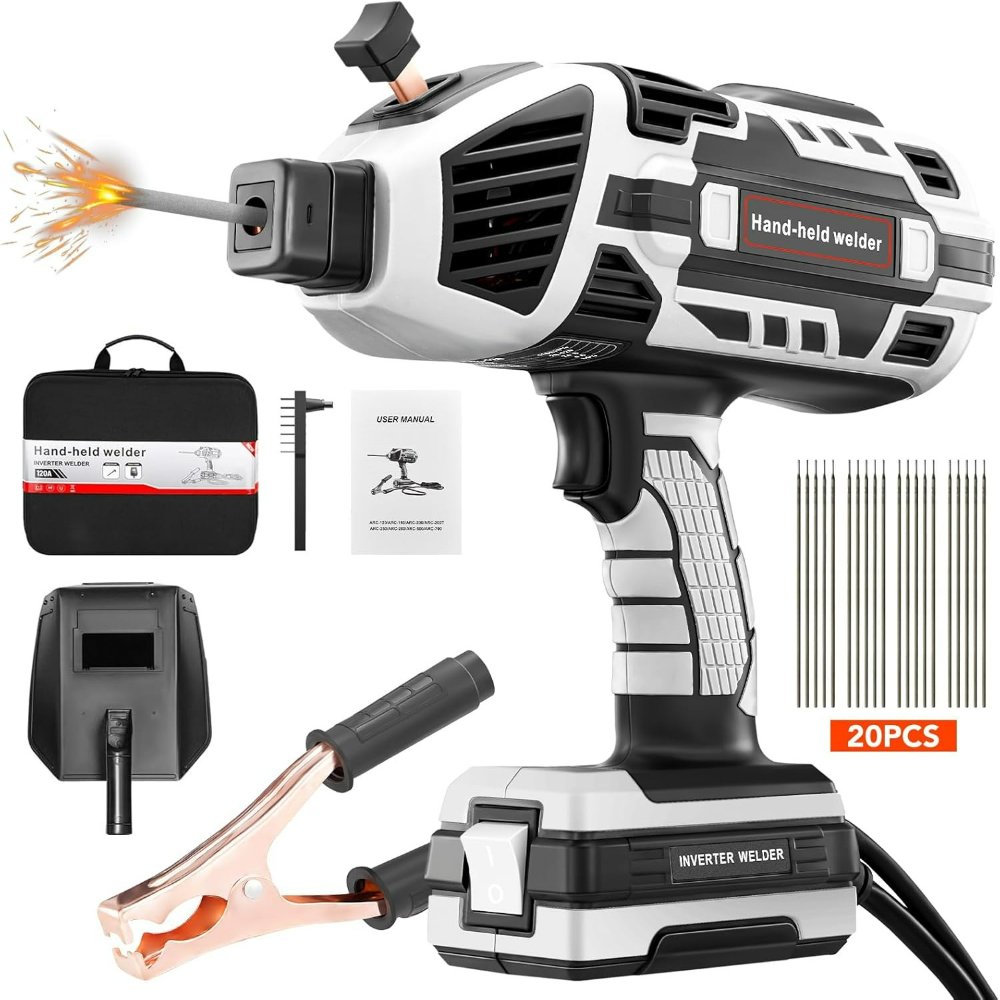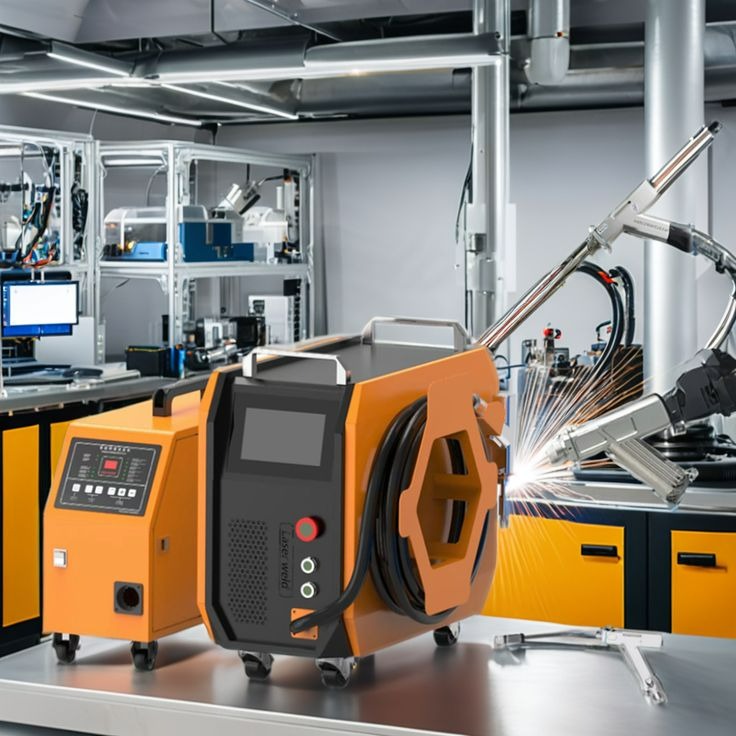Tips for Maintaining Your Welding Machine Parts Effectively
Introduction to Welding Machine Parts
Welding machines are essential in joining metal parts precisely and durably. Understanding the functions and maintenance of various welding machine parts is key to ensuring their optimal performance and longevity. In this guide, we will break down the main components of a welding machine and highlight the importance of each part.
Welding machines consist of several crucial parts. These include a power source, which provides the necessary energy for welding; feeder parts, which control the delivery of filler material; gun and torch parts, which are the main point of contact for the welder; and cable assemblies, which transmit power and control signals. Each of these components plays a vital role in the operation of the welding machine.
Regular maintenance of these parts is vital. It can prevent downtime, extend the life of the machine, and provide a safer working environment. Welders must be familiar with each component and its upkeep. In the upcoming sections, we will detail maintenance schedules, common issues, and step-by-step procedures for keeping welding machine parts in top condition.
![]()
Regular Maintenance Schedule for Optimal Performance
To maintain your welding machine’s optimal performance, a regular maintenance schedule is crucial. The schedule you establish should be based upon the manufacturer’s recommendations, as well as the intensity of use and the environment in which the machine operates.
Creating a maintenance schedule involves several routine tasks. These include visual inspections, functional checks, and component replacements at regular intervals. A professional should carry out full-service maintenance annually, but monthly check-ups can be conducted by trained in-house staff.
Here’s a basic outline to consider for maintaining your welding machine parts:
- Daily: Perform a quick visual check of all cables, connections, and the welding gun. Ensure there are no obvious signs of wear or damage.
- Weekly: Clean external surfaces and remove any accumulated dust or debris that can cause overheating or interfere with the operation of the machine.
- Monthly: Inspect electrical components for signs of overheating, such as discolored wires or connectors, and test the feed mechanism to ensure smooth operation.
- Every Six Months: Replace consumable parts like contact tips, gas nozzles, and liners as they wear out. Also, check for any loose connections in the cable assemblies.
- Annually: Have a certified professional thoroughly inspect the machine and perform any necessary repairs.
Adhering to these intervals helps prevent breakdowns and prolongs the life of your welding machine. It is essential to adjust the frequency of these maintenance tasks based on the specific conditions of use. Harsher environments or heavier usage may require more frequent attention to certain welding machine parts.
Comprehensive Guide to Welding Machine Components
As the heart of welding operations, it’s essential to understand the core components of your welding machine. Each part is designed to perform specific functions that, when in harmony, result in efficient and effective welding processes. Let’s delve into the key components:
Power Source Components
The power source is the lifeline of the welding machine, converting electrical input into a stable current for welding. Key parts include:
- Transformers: Boost or reduce voltage to achieve the desired welding current.
- Rectifiers: Convert AC to DC power if necessary.
- Inverters: Adjust the frequency for better control over the welding arc.
Care for these components involves checking for overheating and ensuring connections are secure.
Feeder Parts
Feeder parts manage the delivery of the welding filler material. They include:
- Wire feed motors: Drive the wire through the feeder.
- Feed rollers: Control wire speed and tension.
- Spool holders: Keep the wire feeding smoothly.
Regular inspection for wear and proper tension is crucial to prevent feeding issues.
![]()
Gun and Torch Parts
Welding guns and torches act as the conductors for the welding arc and filler material. Components to maintain include:
- Nozzles: Direct the shielding gas and must remain clean.
- Contact tips: Conduct electricity to the wire; replace when worn.
- Trigger switches: Control the welding process and should be responsive.
A monthly functionality check ensures these parts are in optimal condition.
Cable Assemblies
Cables connect the power source to the gun and must handle high currents. Components include:
- Ground clamps: Ensure a stable arc by grounding the workpiece.
- Electrode cables: Carry current to the electrode; inspect for cracks regularly.
- Control cables: Send signals from the power unit to the feeder.
Keeping cables free from cuts and abrasions is vital for safe operation.
Understanding each welding machine part enables you to maintain the machine effectively, ensuring reliable and safe welding performance. Periodic maintenance of these components not only extends the machine’s lifespan but also guarantees the quality of your welding work.
Common Issues and Troubleshooting Tips
Welding machine parts may face several common issues that affect their performance. Knowing how to detect and fix these problems can save time and money. This section provides troubleshooting tips for typical electrical and mechanical issues.
Electrical Problems
Electrical issues in welding machines often include overheating, short circuits, and faulty connections. Here’s how to address them:
- Check the power source components for signs of overheating, such as discoloration or a smell of burning.
- Examine cables and connections for damage, like frayed wires or loose plugs, and fix them immediately.
- Test the functionality of the switch and replace it if it does not respond properly.
Attending to these electrical concerns promptly can prevent more serious machine failures.
Mechanical Failures
Mechanical problems with welding machine parts may involve jammed feeders, irregular wire feeding, or worn-out components. Here are steps to troubleshoot mechanical failures:
- Clean the feeder parts regularly to prevent jamming by removing any accumulated debris.
- Check the tension and alignment of feed rollers to ensure consistent wire speed.
- Replace worn gun and torch parts, such as nozzles and contact tips, to avoid poor arc quality.
Dealing with mechanical issues as they arise will contribute to smoother welding operations and extend the equipment’s lifespan.
![]()
Step-by-Step Maintenance Procedures
Regular upkeep of welding machine parts is the key to efficiency and longevity. Let’s walk through the maintenance procedures step by step to keep your equipment in top shape.
Cleaning and Dust Removal
Dirt and dust can seriously harm your welding machine. Follow these simple steps for cleaning:
- Turn off and unplug the machine before cleaning.
- Use a soft brush or cloth to wipe away dust from all surfaces.
- Clean the fan and vents to ensure proper airflow, which prevents overheating.
- Avoid harsh chemicals that can damage the machine’s parts.
Remember to clean after each use to prevent buildup and potential overheating.
Checking and Replacing Consumables
Consumables are parts that wear out with use. They need regular checks:
- Inspect contact tips, nozzles, and liners monthly for wear.
- Replace any part that looks worn out to maintain a strong and stable arc.
- Keep a supply of consumables on hand to avoid downtime.
Timely replacement of consumables ensures consistent welding quality.
Inspecting Cables and Connections
Cables and connections are vital to safe and effective welding. To maintain them:
- Look for cracked, frayed, or exposed wires.
- Ensure all connections are tight and secure.
- Replace any damaged cables immediately to prevent electrical issues.
Regular inspections help avoid electrical hazards and maintain machine performance.
Safety Measures During Maintenance
When maintaining welding machine parts, safety should be your top priority. Here are key precautions to keep in mind:
- Always Disconnect Power: Before servicing your machine, make sure it’s completely powered down and unplugged.
- Wear Appropriate Gear: Use safety glasses, gloves, and other protective clothing to guard against sparks and debris.
- Keep a Clean Workspace: Clear the area of flammable materials and ensure you have ample space to work safely.
- Avoid Water Exposure: Since welding involves electricity, keep the machine dry to prevent electric shocks.
- Use Proper Tools: Employ the right tools for maintenance tasks to avoid damaging parts or injuring yourself.
- Ventilate the Area: Ensure there’s enough air circulation to dilute any potentially harmful fumes from solder or other materials.
- Be Aware of Others: Make sure people nearby are aware of your maintenance work and are at a safe distance from potential hazards.
Following these safety measures not only helps protect you but also ensures the longevity and reliability of your welding machine parts. Remember, if certain maintenance tasks seem risky or you are unsure about your ability to complete them safely, it’s always best to seek professional help.
When to Seek Professional Repair Services
While regular maintenance is key for the longevity of welding machine parts, there are times when professional repair services are necessary. Knowing when to seek expert help can save you from extensive damage and costly repairs in the long run.
- Complex Electrical Issues: If you encounter electrical problems that are beyond simple fixes like replacing frayed cables or tightening loose connections, it’s best to call a professional.
- Performance Inconsistencies: When your welding machine starts to act unpredictably, with fluctuating arc quality or unresponsive controls, professional diagnostics are needed.
- After a Major Malfunction: If your welding machine has a major failure, such as refusing to power on or producing no arc, expert assessment is crucial.
- Routine Annual Checkup: Even with no apparent issues, have a certified technician inspect your machine annually as part of your maintenance routine.
- Upgrades or Modifications: Should you need to upgrade or modify your machine for new materials or processes, professional guidance ensures correct installation.
- Lack of In-House Expertise: If your team lacks the knowledge to address specific problems, seeking professional services avoids further damage.
Professional repair services have the tools and knowledge to deal with complex issues quickly and effectively. Trusting them with your welding machine repairs ensures that maintenance is done right, preserving your equipment’s performance and safety.
Conclusion and Best Practices for Longevity
Proper maintenance of welding machine parts is essential for the machine’s longevity and performance. Summarizing the points covered, the best practices include adhering to a regular maintenance schedule, understanding the function and maintenance needs of each component, troubleshooting common issues promptly, and ensuring safety during maintenance work.
Consistent cleaning, checking, and replacing consumables, as well as inspecting cables and connections, will keep the welding machine in top condition. Recognize the signs that suggest the need for professional repair services and do not hesitate to seek them out, especially for complex issues, performance inconsistencies, or when upgrades are necessary.
To ensure the enduring efficiency of your welding machine, remember to:
- Follow the maintenance schedule strictly, based on your machine’s workload and environment.
- Perform daily, weekly, and monthly checks as recommended.
- Clean and remove dust regularly to prevent overheating and blockages.
- Frequently check for and replace worn-out consumables and damaged cables.
- Stay aware of electrical and mechanical issues and fix them quickly.
- Always prioritize safety by wearing protective gear and following best practices.
- Schedule an annual inspection by certified technicians.
Implementing these strategies will help maximize the lifespan of your welding machine, ensure its optimal functionality, and maintain a safe work environment. Keep your welding machine running like new by being proactive with maintenance and repairs.

